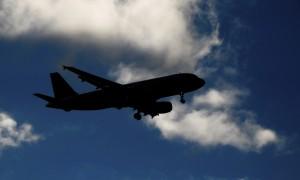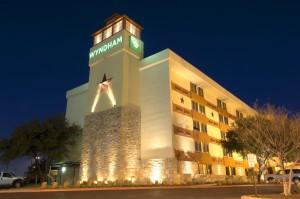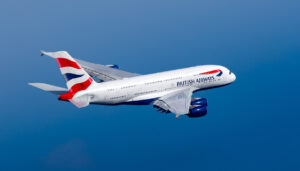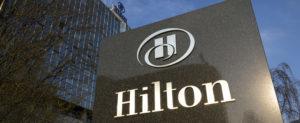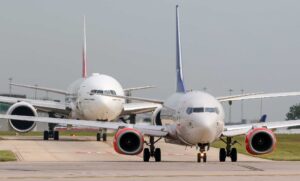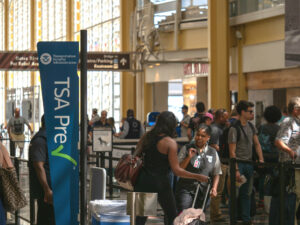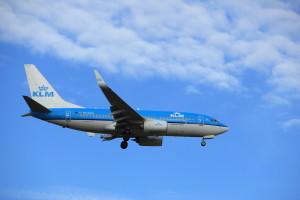Winter (Q1 2015) schedule cuts coming
#91
FlyerTalk Evangelist
Join Date: Aug 2002
Location: Bay Area, CA
Programs: UA Plat 2MM; AS MVP Gold 75K
Posts: 35,068
DL has said that domestic is profitable and high growth in the current environment. With their financial results, there's no reason not to believe them.
#92
Join Date: Sep 2010
Location: San Francisco Bay Area
Posts: 5,825
If your company will pay for, or you can afford C (or F) on an International airline, and you aren't beholden to a legacy USA (DL, AA, UA) airlines FF/Elite program, why wouldn't you take the foreign option?
If you are stuck in E, do you think the foreign options are much different (better) than UA?
#93
Join Date: Apr 2004
Location: Washington, DC
Posts: 1,309
say what you will
but i was just on the A319 and A320 with the slimline. I preferred it to the AA 738 and the DL 739 i flew on recently. Or rather, I didn't see it as remarkably inferior.
Soon i'm sure you'll enjoy the quality of the DL 739s and the stuffed 757s (fewer F class seats) as those 767s are retired.
To each their own I suppose.
Soon i'm sure you'll enjoy the quality of the DL 739s and the stuffed 757s (fewer F class seats) as those 767s are retired.
To each their own I suppose.
It's an issue for UA because I reject UA aircraft -- especially the miserable slimline A320s -- in favor of competitors, given the option. Especially when I can score a widebody. You act like consumers have no choice and no awareness of the last-place nature of UA's product offerings, which come to think of it is how UA management acts too.
Rationalize UA's shrinkage, pullbacks, small planes, slimmer frequencies all you want, but it adds up to a failure to achieve critical mass outside a couple fortress hubs.
Likewise, CO saw the whole domestic network as a necessary evil -- a break-even nuisance that existed mainly to feed profitable international ops.
Rationalize UA's shrinkage, pullbacks, small planes, slimmer frequencies all you want, but it adds up to a failure to achieve critical mass outside a couple fortress hubs.
Likewise, CO saw the whole domestic network as a necessary evil -- a break-even nuisance that existed mainly to feed profitable international ops.
#94
FlyerTalk Evangelist
Join Date: Feb 2002
Location: San Francisco/Tel Aviv/YYZ
Programs: CO 1K-MM
Posts: 10,762
Likewise, CO saw the whole domestic network as a necessary evil -- a break-even nuisance that existed mainly to feed profitable international ops.
#95
Join Date: Feb 2008
Programs: 6 year GS, now 2MM Jeff-ugee, *wood LTPlt, SkyPeso PLT
Posts: 6,526
I don't believe the facts support that contention. Even ignoring the CO-origin aircraft (because of the way planespotters.net presents in-service dates), mainline UA has about 100 aircraft that are more than twenty years old. These covers a broad spectrum of passenger count and range: 747s, 757s, 767s, 777s, and A320s. There's plenty of planes fully-depreciated UA can park if it doesn't like average fares vs. variable expense.
I don't know Delta's fleet as well as I'm sure some do, but its a mix of some leased, but mostly owned planes: http://www.delta.com/content/www/en_...aft-fleet.html
My understanding is that Delta is returning planes to lessors as they come off lease, but they are not selling old planes (absent a D check issue). So yes, the delta domestic 763 fleet will shrink (and has shrunk some) ditto the 757 fleet and the MD-88 fleet, but Delta has no plans currently to retire them completely.
United's ownership vs. Lease if found on page 22 of its annual report, and far more of its fleet is leased than is DL's. Of the 763s, 19 are owned, 16 are leased. Of the 752s 49 are owned, 61 are leased. Of the A320s 51 are owned, 46 are leased, and of the A319s 41 are owned, 14 are leased.
I expect that United will return all of these aircraft types as they come off lease, unless they get a screaming deal, and replace them with the new deliveries of 739ER and 787s. [ And the same with the 8 leased 747s and 17 leased 772ERs, replaced with A350/787-9/10s]. This makes perfect sense.
The real question is what will United do with the older aircraft it owns? Unlike DL (which I think is keeping what it owns) my understanding is that United's deal with FED EX was to sell 757s it owned.
Next year, United is slated to give up 3 763s. I think all are leased (I can be corrected if I'm wrong). The announced plans are to get rid of ALL 757/767s in the next few years, except the 2 class 763 and the PS/International 752s. That will have to change if United wants to do a Delta like "swing" strategy as all of the "swing" airplanes are currently slated to be sold off.
There is a stage length threshold (dependent on baseline narrowbody and replacement widebody, of course) where this becomes more cost effective, but it's not a universal truism. Sort of like how CASM declines over stage length.
I would wager that, for most domestic segments, the economics of operating multiple narrowbody frequencies are more favorable than operating a single widebody with a similar number of seats.
The empirical evidence is that domestic widebody service is relatively scarce, and the biggest operator (DL) has plans to pull down their dedicated domestic 767 fleet.
The other point is that widebodies are simply too much airplane to fly on shorter domestic flights. An aircraft like a 777 is designed to carry a lot of fuel, a lot of cargo (not often found in the domestic market), a lot of bags and all the ancillary items needed to support a passenger trip for a long duration. Naturally, a domestic route does not require this kind of capability, so you're stuck flying a whole lot of airplane around and not using the asset to the extent of its capabilities.
A simple illustration of this principle is a comparison of the operating empty weight (OEW) of the aircraft. For example, a 737-800 OEW is around 91,000 pounds, whereas a 777-200ER is roughly 300,000lbs. Even a 767-400ER is about 230k. That's before you install seats, galleys, lavs, interior fittings, etc. and long before pax, bags, cargo and fuel are boarded. So, for a 737-800 to haul 300 pax on a given sector, you're going to need about 185,000lb worth of airplane to do the job, before taking into account the other fixed and variable costs associated therewith.
With respect to overall fuel burn, the multiple is often 2.5x to 3.5x from narrowbody (current gen 737/A320) to wide-body (A330/777). Of course, crew costs may be slightly higher with two aircraft as they require two full flight crews, but wide-bodies are often staffed with a higher crew : pax ratio.
I get it, as a passenger I far prefer widebodies to narrowbodies and will actively book that way if my itinerary permits, but the notion that multiple narrowbody flights are generally less favorable (economically) than fewer widebody frequencies is mostly a fallacy.
I would wager that, for most domestic segments, the economics of operating multiple narrowbody frequencies are more favorable than operating a single widebody with a similar number of seats.
The empirical evidence is that domestic widebody service is relatively scarce, and the biggest operator (DL) has plans to pull down their dedicated domestic 767 fleet.
The other point is that widebodies are simply too much airplane to fly on shorter domestic flights. An aircraft like a 777 is designed to carry a lot of fuel, a lot of cargo (not often found in the domestic market), a lot of bags and all the ancillary items needed to support a passenger trip for a long duration. Naturally, a domestic route does not require this kind of capability, so you're stuck flying a whole lot of airplane around and not using the asset to the extent of its capabilities.
A simple illustration of this principle is a comparison of the operating empty weight (OEW) of the aircraft. For example, a 737-800 OEW is around 91,000 pounds, whereas a 777-200ER is roughly 300,000lbs. Even a 767-400ER is about 230k. That's before you install seats, galleys, lavs, interior fittings, etc. and long before pax, bags, cargo and fuel are boarded. So, for a 737-800 to haul 300 pax on a given sector, you're going to need about 185,000lb worth of airplane to do the job, before taking into account the other fixed and variable costs associated therewith.
With respect to overall fuel burn, the multiple is often 2.5x to 3.5x from narrowbody (current gen 737/A320) to wide-body (A330/777). Of course, crew costs may be slightly higher with two aircraft as they require two full flight crews, but wide-bodies are often staffed with a higher crew : pax ratio.
I get it, as a passenger I far prefer widebodies to narrowbodies and will actively book that way if my itinerary permits, but the notion that multiple narrowbody flights are generally less favorable (economically) than fewer widebody frequencies is mostly a fallacy.
The issues is instead if it makes more sense to pay the CAP-x or lease payments for two new planes (737 or A320/321) + two crews (four pilots), plus use two sets of GAs/Jet Bridges, and use two departure/landing slots vs. Using a 767 in a domestic configuration, or an older 777 (non-ER) in a domestic configuration.
The figures you are using for fuel burn are not applicable as its for a widebody at MTOW, and I think that the advantage on a per seat basis for a totally modern narrow-body in fuel burn is much narrower when the older widebody is not fully fueled (in fact probably has only 40% of the fuel it would carry at MTOW) which is the apples to apples comparison.
The 737ER has a MTOW of 187K/lb, and holds 7800g of fuel (with auxiliary tanks), with a range of 3235 nmi. [fuel would be 28% of the planes MTOW]
The 763ER has a MTOW of 408,000 and holds 23,000g of fuel, with a range of 5990 nmi. [Fuel would be 38% of the planes MTOW]. But Assuming you only carried half that fuel, with jet fuel at 6.8lb/g, just carrying only half the fuel shaves 88,400 lbs off the planes weight. Since you are not carrying that extra 88,400 lbs of weight (unless you filled the thing with cargo, think Hawaii) the fuel savings (and resulting weight savings) are even greater, hence my 40% guesstimate for fuel load on a transcon/hawaii flight.
On Trancon or Hawaii flights, the weight difference per seat is not infact that great between the planes [If I take away half the fuel weight its 1183 lbs/passenger for the 763, 1038 lbs/passenger for the 739ER; with 270/180 as the configurations]. Someone with more technical information can give a better estimate (I can't find any) but I would be very surprised if the difference in fuel burn per seat were more than 15% and it might be less (its is most certainly not 3-3.5x!). That more than swamps the other (particularly cap-x/lease) costs of running two aircraft. This is why AA, DL, and PMUA all ran domestic wide-bodies where they have the load to fill them, which they did with hubs in bigger cities/regions.
And I note that when the CO management took over, and moved the sUA wide-bodies to international configuration, they did not say they planes were not making money, they said they could make MORE money if deployed internationally. What CO did was take an efficient use of aircraft and put them overseas, at a time when domestic margins were climbing and international margins were getting tighter. This is part of why DL (and AA/US) is blowing the doors off UAL, Delta has improved and expanded its domestic market share, while United has cut its domestic share and degraded its product.
p.s. The figures above are back of the envelope guesstimates, and since it is not my area, I would be pleased as punch if someone shows me I'm looking at things in the wrong way

#96
Join Date: Mar 2008
Location: TPA, finally
Programs: AA EXP/US CP, United 1K (1MM) , Marriott Plat, Avis Plus
Posts: 303
missed your calling
Spin,
You would have been a great flight engineer. You'd be jobless for about 15 years, but would have been fuel burn guesser several months in a row
You would have been a great flight engineer. You'd be jobless for about 15 years, but would have been fuel burn guesser several months in a row
#97
Join Date: Jan 2005
Location: New York, NY
Programs: UA, AA, DL, Hertz, Avis, National, Hyatt, Hilton, SPG, Marriott
Posts: 9,452
The 2-3.5x hourly fuel burn multiples are rough estimates on a per-aircraft basis, not per-seat , and blended based on phase of flight (e.g., taxi/takeoff/climb/longhaul cruise/descent/approach/landing).
Using publicly-available Boeing performance planning figures, a derated 777-200ER with 300 seats will burn roughly 65,000 pounds of fuel on a 2000nmi sector, whereas a 737-900ER with 180 seats will burn somewhere around 28,000 pounds of fuel. Even assuming 737-900ER performance at the low end of the curve (high gross weight, hot/high conditions, no winglets, etc.), and better performance out of the 777, there is still a large gap in fuel efficiency between 2x 739ER and 1x 777 for the purposes of moving 300-350 pax on a ~2000nm sector.
As I mentioned, the empirical evidence suggests that such flying is not nearly as profitable as you posit, given Delta's strategy to reduce its high-density domestic WB operations in favor of large narrowbodies on increased frequency.
#98
FlyerTalk Evangelist
Join Date: Aug 2002
Location: Bay Area, CA
Programs: UA Plat 2MM; AS MVP Gold 75K
Posts: 35,068
Using publicly-available Boeing performance planning figures, a derated 777-200ER with 300 seats will burn roughly 65,000 pounds of fuel on a 2000nmi sector, whereas a 737-900ER with 180 seats will burn somewhere around 28,000 pounds of fuel. Even assuming 737-900ER performance at the low end of the curve (high gross weight, hot/high conditions, no winglets, etc.), and better performance out of the 777, there is still a large gap in fuel efficiency between 2x 739ER and 1x 777 for the purposes of moving 300-350 pax on a ~2000nm sector.
As I mentioned, the empirical evidence suggests that such flying is not nearly as profitable as you posit, given Delta's strategy to reduce its high-density domestic WB operations in favor of large narrowbodies on increased frequency.
As I mentioned, the empirical evidence suggests that such flying is not nearly as profitable as you posit, given Delta's strategy to reduce its high-density domestic WB operations in favor of large narrowbodies on increased frequency.
That's great information, but you're looking only at the cost at the pump, not the car payment.
I wouldn't read into the economics of the flying based on DL's reduction in said domestic widebodies. It may be more a function of the aircraft nearing the end of its life.
If DL could get widebodies on the cheap for use domestically, that might change the economics dramatically.
#99
A FlyerTalk Posting Legend
Join Date: Jun 2005
Posts: 57,595
If I'm flying TPAC and I can't upgrade or get an aisle seat in E+, I'm flying ANA, Singapore, Cathay, or Korean. It isn't even close.
#100
Join Date: Sep 2010
Location: San Francisco Bay Area
Posts: 5,825
I mean, it makes sense, but this is the exact reason why (especially as an elite, but even if I had to buy E+) I would fly UA. Everything else is a distant second place and below after E+ / personal space.
#101
Join Date: Jul 2014
Location: BOS
Programs: 1MM, UA 1k
Posts: 529
as a 1k, how often do you fly TPAC and not get E+ aisle on UA? My travel is usually booked < 1 week ahead and I can think of maybe 1 out of 30 TPAC legs where I wasn't UG or E+ aisle.
personally, UA steerage isn't different than the others. I've taken BR and SQ red-eyes home to shorten trips, always in the back, and it's been an horrid experience each time.
personally, UA steerage isn't different than the others. I've taken BR and SQ red-eyes home to shorten trips, always in the back, and it's been an horrid experience each time.
#102
Join Date: Feb 2008
Programs: 6 year GS, now 2MM Jeff-ugee, *wood LTPlt, SkyPeso PLT
Posts: 6,526
Using publicly-available Boeing performance planning figures, a derated 777-200ER with 300 seats will burn roughly 65,000 pounds of fuel on a 2000nmi sector, whereas a 737-900ER with 180 seats will burn somewhere around 28,000 pounds of fuel. Even assuming 737-900ER performance at the low end of the curve (high gross weight, hot/high conditions, no winglets, etc.), and better performance out of the 777, there is still a large gap in fuel efficiency between 2x 739ER and 1x 777 for the purposes of moving 300-350 pax on a ~2000nm sector.
So what is the fuel difference? In the new Hawaii config, the 777 seats 348 which would be 27.5g of fuel/passenger. (65k/6.8/348). The new "slimmed" high density 739ER on UA seats 179. It would use 23g of fuel/passenger.
That extra 4.5 g of av fuel would cost United (at last months prices) $13.725.
So the trade off is (and the actual figure I expect is far higher, I am assuming a very high 6000nm of flying in a day for the plane every day and my $7M figure may be low) $35/passenger in expanses for the plane vs. an extra $13.725 in fuel savings.
Not even considering the costs of two crews (really just two extra pilots, the FAs are in relation to number of customers), two gate crews, two landing slots/gate use, etc, the 772 is going to be likely cheaper to fly if its already depreciated.
On the DL point, as I noted above, I don't think that Delta is pulling its OWNED 763 domestic birds, it is simply returning 763s as they come off lease or need D checks. I think that has nothing to do with the operating cost issues we are discussing.
p.s. I might add that this math shows the need to get as many hours of use out of very expensive new planes as possible. It is what has driven UAL to unrealistic scheduled with little down time, and a sub 80% OT percentage. Since the part of DL's fleet which is older and owned need to be used so heavily, more downtime is built in, which is why their OP is usually around 85%
Isn't this like saying 'If you take away the one thing that UA has a strong advantage in (E+, which is not being taken away), then I would not fly UA.'
I mean, it makes sense, but this is the exact reason why (especially as an elite, but even if I had to buy E+) I would fly UA. Everything else is a distant second place and below after E+ / personal space.
I mean, it makes sense, but this is the exact reason why (especially as an elite, but even if I had to buy E+) I would fly UA. Everything else is a distant second place and below after E+ / personal space.
The "UA is great, it has E+, doesn't need anything else" drum has been beaten to death.

Last edited by spin88; Sep 24, 2014 at 4:35 pm
#103
Join Date: May 2013
Posts: 3,361
working with your figures, a 739ER lists for $99M, and the cheapest anyone is reputed to have gotten them for was $43M to DL in 2011. The usual prices quoted are $55-60M each. Assuming that, the cost of the airplane would be on the conservative side something like $7M/year. Assuming you fly it every single day, 6000 mn a day (which is very high) the plane costs you $6392/fight. That is $35/passenger for the airplane on that flight.
#104
Join Date: Jan 2005
Location: New York, NY
Programs: UA, AA, DL, Hertz, Avis, National, Hyatt, Hilton, SPG, Marriott
Posts: 9,452
That's great information, but you're looking only at the cost at the pump, not the car payment.
I wouldn't read into the economics of the flying based on DL's reduction in said domestic widebodies. It may be more a function of the aircraft nearing the end of its life.
If DL could get widebodies on the cheap for use domestically, that might change the economics dramatically.
I wouldn't read into the economics of the flying based on DL's reduction in said domestic widebodies. It may be more a function of the aircraft nearing the end of its life.
If DL could get widebodies on the cheap for use domestically, that might change the economics dramatically.
working with your figures, a 739ER lists for $99M, and the cheapest anyone is reputed to have gotten them for was $43M to DL in 2011. The usual prices quoted are $55-60M each. Assuming that, the cost of the airplane would be on the conservative side something like $7M/year. Assuming you fly it every single day, 6000 mn a day (which is very high) the plane costs you $6392/fight. That is $35/passenger for the airplane on that flight.
So what is the fuel difference? In the new Hawaii config, the 777 seats 348 which would be 27.5g of fuel/passenger. (65k/6.8/348). The new "slimmed" high density 739ER on UA seats 179. It would use 23g of fuel/passenger.
That extra 4.5 g of av fuel would cost United (at last months prices) $13.725.
So the trade off is (and the actual figure I expect is far higher, I am assuming a very high 6000nm of flying in a day for the plane every day and my $7M figure may be low) $35/passenger in expanses for the plane vs. an extra $13.725 in fuel savings.
Not even considering the costs of two crews (really just two extra pilots, the FAs are in relation to number of customers), two gate crews, two landing slots/gate use, etc, the 772 is going to be likely cheaper to fly if its already depreciated.
So what is the fuel difference? In the new Hawaii config, the 777 seats 348 which would be 27.5g of fuel/passenger. (65k/6.8/348). The new "slimmed" high density 739ER on UA seats 179. It would use 23g of fuel/passenger.
That extra 4.5 g of av fuel would cost United (at last months prices) $13.725.
So the trade off is (and the actual figure I expect is far higher, I am assuming a very high 6000nm of flying in a day for the plane every day and my $7M figure may be low) $35/passenger in expanses for the plane vs. an extra $13.725 in fuel savings.
Not even considering the costs of two crews (really just two extra pilots, the FAs are in relation to number of customers), two gate crews, two landing slots/gate use, etc, the 772 is going to be likely cheaper to fly if its already depreciated.
Finally, you make a major assumption that the WB aircraft is fully depreciated, while the NB is presumably fully leveraged. A simple review of the UA fleet subject to EETC financing reveals that the story is not so clearly defined.
The bottom line is that the industry shows very little evidence that this strategy, while certainly preferable to passengers, is generally a better move in terms of operating economics.
Last edited by EWR764; Sep 24, 2014 at 5:26 pm
#105
Join Date: Sep 2010
Location: San Francisco Bay Area
Posts: 5,825
The discussion was UA internationally in Y vs. International carriers in Y (not DL or AA).
If you want to have a domestic / legacy discussion about E+ / MCE / EC (why include VX I have no idea), that would be a separate topic.


